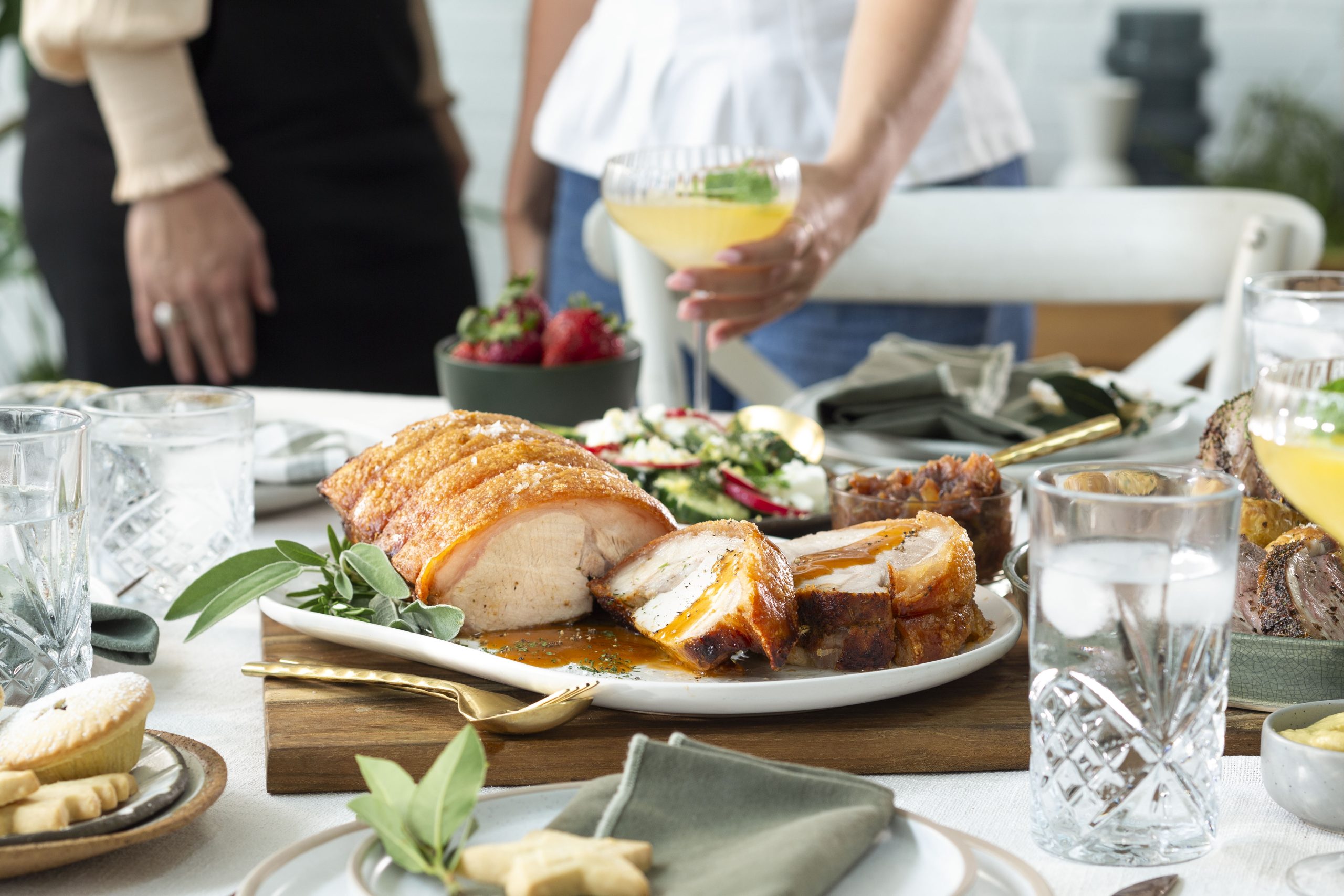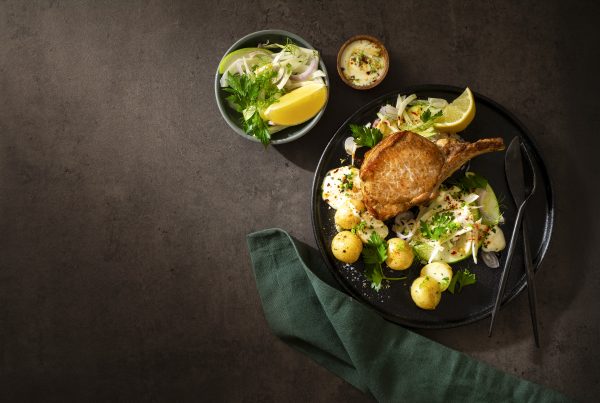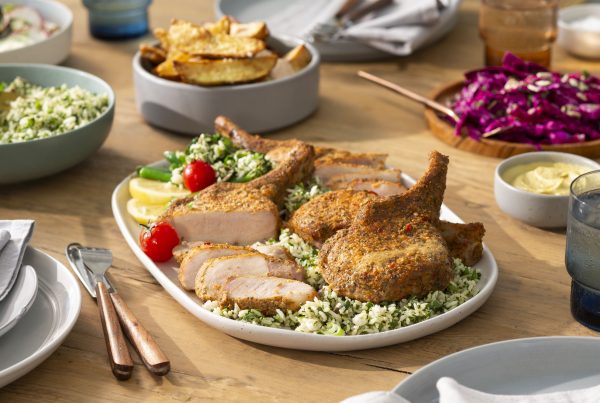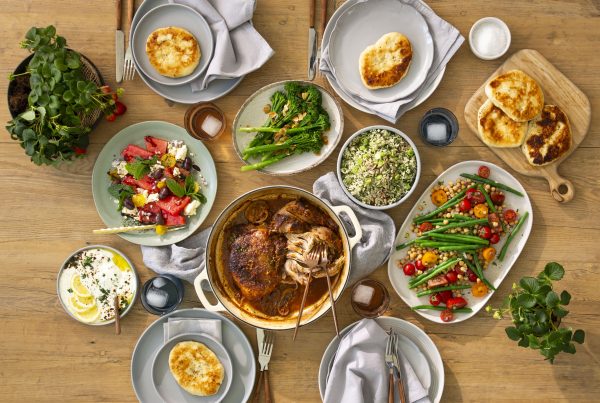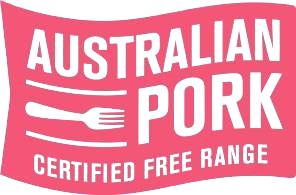Learning how to cook pork to perfection will transform your meals into moments worth savouring. If you’ve ever wondered about colour, temperature, or what juicy, safe pork should look like, you’re not alone. Even seasoned cooks have a hard time answering the question, “When is pork done?”.
The secret to succulent pork dishes is a combination of technique, intuition, and high-quality Linley Valley Pork products.
Is Pork Red or White Meat?
Many Aussies are surprised to learn that pork is red meat. Pork often appears pale after cooking, leading many people to think it belongs in the white meat category alongside chicken. Science says otherwise. Pork contains more myoglobin than chicken, making it a true red meat. That’s why raw pork has a natural blush.
With pork, you enjoy a lighter look on the plate and all the rich flavour and nutrition of red meat. When you choose pork as red meat, you enjoy high-quality protein, iron, zinc, and essential B vitamins in every juicy bite.
Learn more: Beyond the Chicken Breast: Why Pork Deserves a Spot in Your Weekly Meal Plan.
Can Pork Be Eaten Pink?
Let’s tackle the big question: can pork be eaten pink? For years, myths claimed you had to cook pork until it turned grey and dry as the Nullarbor. That’s ancient history. As long as you cook pork to the correct internal temperature, it can and should be slightly pink in the centre.
Australian food safety standards are among the best in the world. Most pork in Australia is produced under strict food safety systems, including the Australian Pork Industry Quality Assurance Program (APIQ✓®) and a robust livestock tracing system (PigPass). These programs ensure our pork is safe from paddock to plate.
On top of that, the National Residue Survey has kept compliance above 99% since 2016, and Food Standards Australia New Zealand (FSANZ) sets clear rules for safe food handling and labelling. Follow the right cooking guidelines, and you can enjoy every juicy, slightly pink bite with complete confidence.
Learn more: Exploring The Protein Benefits of Pork.
When Is Pork Done?
The answer to “pork is cooked at what temp” depends on the cut. The golden number is 63°C for whole cuts. Use a digital meat thermometer and insert it into the thickest part of the meat, avoiding bone or fat for an accurate reading. For minced pork, play it safe and cook to 71°C.
Once your pork reaches this internal temperature, remove it from the heat and let it rest for at least three minutes to lock in the juices.
How to Cook Pork by Cut
Let’s walk through the most popular methods:
Roasting
Best cuts: Pork leg, loin, and shoulder.
Oven temperature: 180°C fan-forced.
Cooking times:
- Boneless roast: 45 minutes per kilo, plus 20 minutes.
- Bone-in roast: 50 minutes per kilo, plus 20 minutes.
- Rest time: 10-20 minutes before carving.
Your kitchen will fill with the aroma of crisp crackling and juicy roast. Choose a cut with a fat cap for best results, and season generously with salt and herbs. Allow the roast to rest uncovered; this keeps the skin crunchy and the meat tender.
Grilling / BBQ
Best cuts: Chops, steaks, fillets. Slice the meat to about 2.5cm thick.
Grill/BBQ temperature: Around 200–220°C
Cooking time: 2-3 minutes per side over medium-high heat. Rest a few minutes before serving.
Grilling pork outdoors? Expect the sizzle and a charred aroma that instantly says “summer.” Rub chops with spices or marinade, and grill until just cooked through. Juices should run clear, but the centre can stay slightly pink.
Slow Cooking
Best cuts: Shoulder, neck, scotch, ribs.
- 1.2-2.5kg for roasts or large cuts.
- 500-800g for smaller pieces or ribs.
Cooking temperature: Low heat, about 90–100°C in a slow cooker.
Cooking time: 6-8 hours on low, 3-4 hours on high.
Slow cooking transforms tougher cuts into meltingly soft morsels. The aroma will draw the whole family to the kitchen. Shred the meat for tacos, sliders, or a hearty stew. Don’t forget to mop up the sauce with crusty bread.
Pan-Frying
Best cuts: Pork medallions, strips, schnitzel portion (each at 200–300g).
Cooking temperature: Preheat pan to about 160–180°C.
Cooking time: 4-6 minutes on the first side over medium heat, then two minutes on the other.
Sear pork until golden and caramelised. The kitchen fills with the sound of sizzling and a nutty aroma wafts from the pan. Avoid crowding for an even, golden crust.
Stir-Frying
Best cuts: Leg strips, loin, fillet sliced thin. Use 300–500g for 2–3 serves.
Cooking temperature: Preheat to 200–220°C before adding pork.
Cooking time: 3-5 minutes.
Quick, fresh, and loaded with flavour. Toss pork with vibrant veggies and a splash of soy. Serve immediately, while everything is piping hot and glossy.
Ready to discover more techniques? How to Cook Guide.
Tips for Perfect Pork Every Time
Proper Preparation
Let pork come to room temperature to ensure even cooking with no cold spots. Taking it out of the fridge around 15 minutes before you start cooking should do the trick.
A Little Patience
Rest the meat for 3-5 minutes after cooking to let the juices reabsorb. It’s hard to resist diving straight in, but resting helps every bite remain tender.
Great Technique
Slice across the grain to keep each mouthful soft, and use a good marinade or spice rub to create deep, unforgettable flavours.
Use High-Quality Pork
At Linley Valley Pork, we deliver beautifully marbled cuts, packed with natural flavour and outstanding freshness. With our range, you can cook with confidence whether you’re entertaining on the weekend or whipping up a quick midweek meal.
Master Every Mouthful
Cooking pork the right way means understanding that pork is red meat, that it can be enjoyed a little pink, and that doneness comes down to temperature, not just colour. Mastering how to cook pork means you get the juiciest, tastiest results every time.
Looking for the Perfect Pork Cut?
Discover Linley Valley Pork products, and find where to buy your next masterpiece on a plate. And don’t forget to tag Linley Valley Pork when you share your creations on Instagram!

